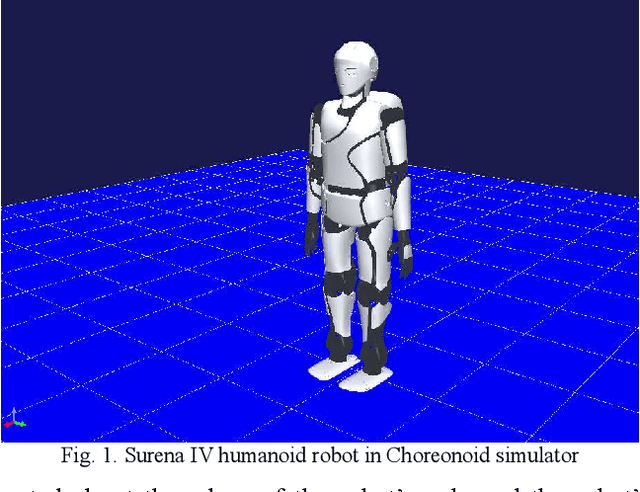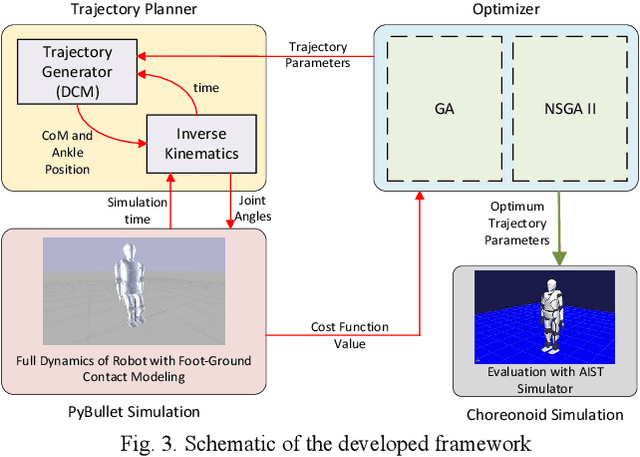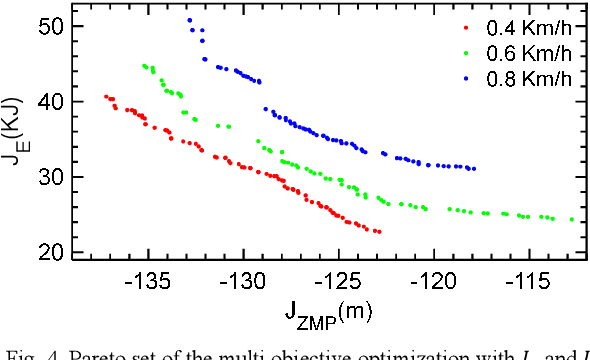Kasra Sinaei
Online Bipedal Locomotion Adaptation for Stepping on Obstacles Using a Novel Foot Sensor
Dec 27, 2022



Abstract:In this paper, we present a novel control architecture for the online adaptation of bipedal locomotion on inclined obstacles. In particular, we introduce a novel, cost-effective, and versatile foot sensor to detect the proximity of the robot's feet to the ground (bump sensor). By employing this sensor, feedback controllers are implemented to reduce the impact forces during the transition of the swing to stance phase or steeping on inclined unseen obstacles. Compared to conventional sensors based on contact reaction force, this sensor detects the distance to the ground or obstacles before the foot touches the obstacle and therefore provides predictive information to anticipate the obstacles. The controller of the proposed bump sensor interacts with another admittance controller to adjust leg length. The walking experiments show successful locomotion on the unseen inclined obstacle without reducing the locomotion speed with a slope angle of 12. Foot position error causes a hard impact with the ground as a consequence of accumulative error caused by links and connections' deflection (which is manufactured by university tools). The proposed framework drastically reduces the feet' impact with the ground.
Bipedal Locomotion Optimization by Exploitation of the Full Dynamics in DCM Trajectory Planning
Jul 30, 2022



Abstract:Walking motion planning based on Divergent Component of Motion (DCM) and Linear Inverted Pendulum Model (LIPM) is one of the alternatives that could be implemented to generate online humanoid robot gait trajectories. This algorithm requires different parameters to be adjusted. Herein, we developed a framework to attain optimal parameters to achieve a stable and energy-efficient trajectory for real robot's gait. To find the optimal trajectory, four cost functions representing energy consumption, the sum of joints velocity and applied torque at each lower limb joint of the robot, and a cost function based on the Zero Moment Point (ZMP) stability criterion were considered. Genetic algorithm was employed in the framework to optimize each of these cost functions. Although the trajectory planning was done with the help of the simplified model, the values of each cost function were obtained by considering the full dynamics model and foot-ground contact model in Bullet physics engine simulator. The results of this optimization yield that walking with the most stability and walking in the most efficient way are in contrast with each other. Therefore, in another attempt, multi-objective optimization for ZMP and energy cost functions at three different speeds was performed. Finally, we compared the designed trajectory, which was generated using optimal parameters, with the simulation results in Choreonoid simulator.
 Add to Chrome
Add to Chrome Add to Firefox
Add to Firefox Add to Edge
Add to Edge